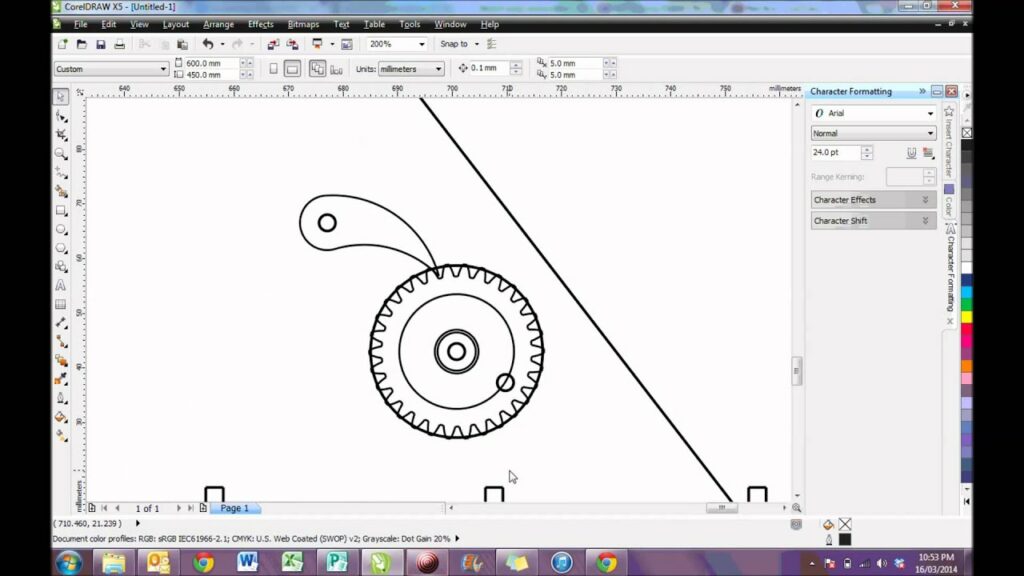A Comprehensive Guide on How to Open a DXF File in CorelDRAW: Unleashing the Power of Compatibility

Introduction
CorelDRAW, a versatile vector graphics editor, is widely used by designers, engineers, and artists for creating intricate illustrations, layouts, and designs. One of its strengths lies in its compatibility with various file formats, including DXF (Drawing Exchange Format). DXF files, commonly used in CAD (Computer-Aided Design) applications, store 2D and 3D design data. In this comprehensive guide, we will delve into the step-by-step process of opening a DXF file in CorelDRAW, allowing users to seamlessly integrate CAD designs into their creative projects.
Understanding DXF Files
Before diving into the intricacies of opening DXF files in CorelDRAW, it’s essential to understand the nature of DXF files. Developed by Autodesk, DXF is an open-standard file format that facilitates the exchange of design data between different CAD programs. DXF files contain information about geometric shapes, layers, and other design elements, making them an industry-standard for sharing and collaborating on CAD designs.
Compatibility of CorelDRAW with DXF
CorelDRAW’s compatibility with DXF makes it a powerful tool for designers working on projects that involve CAD data. The software can seamlessly import DXF files, preserving the integrity of the design elements and allowing users to manipulate and enhance them within the CorelDRAW environment. This compatibility opens up a world of possibilities for users who want to combine the precision of CAD designs with the creative capabilities of CorelDRAW.
Step-by-Step Guide to Opening a DXF File in CorelDRAW
Now, let’s explore the detailed process of opening a DXF file in CorelDRAW:
- Launch CorelDRAW:
- Start by opening the CorelDRAW application on your computer. Ensure that you have the latest version installed to access the most advanced features and improved compatibility.
- Create a New Document or Open an Existing One:
- Depending on your project requirements, you can either create a new document or open an existing one in CorelDRAW. Navigate to the “File” menu and select “New” or “Open” accordingly.
- Import DXF File:
- Once your document is open, go to the “File” menu and choose “Import.” In the import options, locate and select the DXF file you want to open. Click “Import” to initiate the process.
- Adjust Import Settings:
- CorelDRAW provides options to adjust the import settings based on your preferences. You may customize parameters such as scaling, layer visibility, and unit conversion. Review and modify these settings as needed before finalizing the import.
- Explore and Edit:
- After successfully importing the DXF file, explore the layers and design elements within CorelDRAW. Take advantage of the software’s powerful tools to edit, enhance, and customize the imported CAD data according to your creative vision.
- Save Your Work:
- Once you have made the necessary edits and enhancements, save your work in CorelDRAW’s native file format (CDR) or any other compatible format based on your project requirements.
Tips and Best Practices
To ensure a smooth and efficient workflow when opening DXF files in CorelDRAW, consider the following tips:
- Update CorelDRAW:
- Keep your CorelDRAW software up-to-date to benefit from the latest features, improvements, and enhanced compatibility with various file formats, including DXF.
- Check DXF File Integrity:
- Before importing a DXF file, ensure that it is free from errors or corruption. Use CAD software to validate and repair any issues in the DXF file if necessary.
- Understand Unit Conversions:
- Pay attention to unit conversions during the import process, especially if the DXF file was created in a different CAD program with a different unit system. Adjust scaling options accordingly to maintain accuracy.
- Use Layers Effectively:
- Leverage CorelDRAW’s layer functionality to manage and organize different elements of the DXF file. This makes it easier to work with complex designs and make selective edits.
- Explore Advanced Editing Tools:
- Familiarize yourself with CorelDRAW’s advanced editing tools, such as the Shape and Node tools, to refine and modify the imported DXF designs with precision.
- Save Versions:
- When working on complex projects, consider saving different versions of your CorelDRAW file at various stages. This allows you to revert to previous versions if needed and provides a safety net in case of unexpected issues.
Conclusion
Opening DXF files in CorelDRAW expands the creative possibilities for designers, allowing them to integrate CAD data seamlessly into their projects. The step-by-step guide provided in this article, along with tips and best practices, empowers users to navigate the process with confidence. By harnessing the compatibility between CorelDRAW and DXF, designers can create stunning visuals that blend the precision of CAD with the artistic flexibility of vector graphics.




